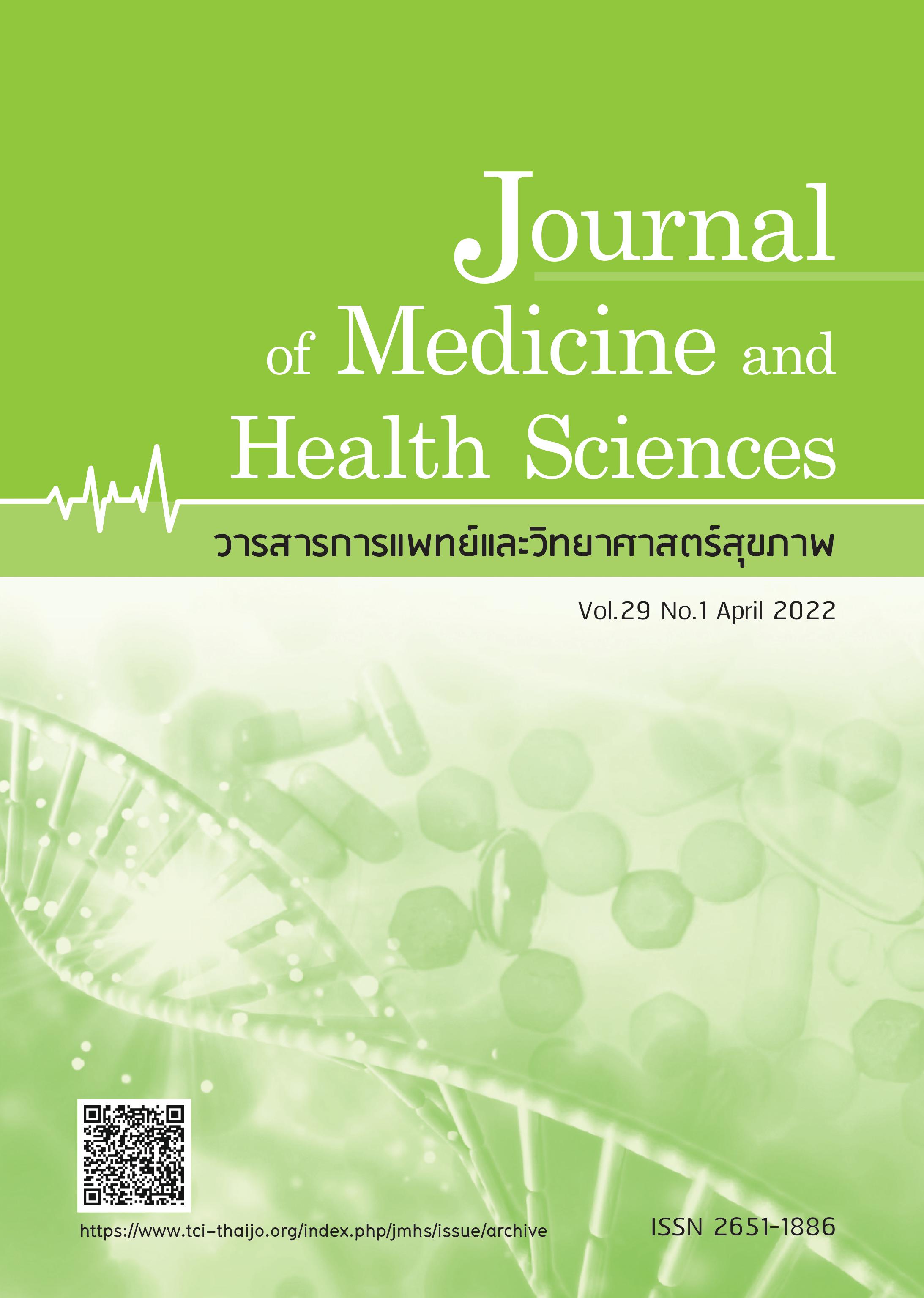Caring in patients undergoing contrast enhanced computed tomography
Keywords:
contrast media, computed tomography, care for patients receiving contrast agents, patient safetyAbstract
Abstract
Iodinated Contrast Medium (ICM) is necessary and useful for differentiating the organs being examined from nearby organs. Although they rarely occur, ICM can cause adverse effects in patients, which may be life-threatening. Preventing the risk of using ICM can be done at any step of procedure from before, during and after the contrast medium injection. If the medical staffs have knowledge and a good understanding of ICM, patients will receive high quality care and safety. This article summarizes knowledge from various related sources, combined with the work experience of authors in order to apply appropriate operational guidelines for patient safety. Moreover, it may also increase the confidence for practitioners and patients to utilize ICM.
References
iData Research. Over 75 million CT scans are performed each year and growing despite radiation concerns. iData Research Intelligence Behind The Data [Internet] 2018 [cited 2021 June 2]. Available
from: https://idataresearch.com/over-75- million-ct-scans-are-performed-eachyear-and-growing-despite-radiationconcerns/.
Johnston A. Iodinated contrast media. Radiopaedia [Internet] 2021 [cited 2021 June 1]. Available from: https:// radiopaedia.org/articles/iodinatedcontrast-media-1.
Thailand nursing and midwifery council. Prohibiting drugs or intravenous solutions. Nursing and midwifery council announcement [Internet] 2021 [cited 2021 June 1]. Available from: https://www.
tnmc.or.th/images/userfiles/files/H015.pdf.
Udomvisatsun R. Nursing care in patients with IV administration of contrast media. Songkla Med J 2004;22:415-24. (in Thai)
Neuaithong K. Prevention guidelines for reducing adverse reaction from intravenous administration of iodinated contrast medium (ICM). Srinagarind Med J 2009;24:91-101. (in Thai)
Suriyajakryuththana W, Suppakool N. Practical points for using contrast media. Vajira Medical Journal 2015;59:73-80. (in Thai)
Tasanarong A. Acute kidney injury. Bangkok: Mochawban; 2014. (in Thai)
Chaopathomkul B, Ruxrungtham K, Leelanukrom R, et al. Clinical practice guideline for contrast media administration in diagnostic imaging. Chula Med J 2010 Jul - Aug;54:375-90. (in Thai)
Thomson KR, Varma DK. Safe use of radiographic contrast media. Aust Prescr 2010 Feb;33:19-22.
Subcommittee of the national essential drugs, Expert committee on national drug selection in diagnostic radiology, Chaopathomkul B. Contrast medium. Bangkok: Aksorn graphic and design
Publishers; 2013. (in Thai)
Kellum JA, Lameire N, Aspelin P, et al. Kidney disease: Improving global outcomes (KDIGO) acute kidney injury work group. KDIGO clinical practice guideline for acute kidney injury. Kidney Int Supplements
;doi:10.1038/kisup.2012.1.
Brockow K, Romano A, Aberer W, et al. Skin testing in patients with hypersensitivity reactions to iodinated contrast media – a European multicenter study. Allergy 2009;64:234-41.
American College of Radiology (US). ACR Manual on Contrast Media. Washington: The Institute; 2021.
Thomsen HS, Chairman. ESUR Guidelines on contrast agent. Berlin: The Institute; 2018.
Webb JAW, Thomsen HS, Morcos SK, et al. The use of iodinated and gadolinium contrast media during pregnancy and lactation. Eur J Radiol 2005;15:1234-40.
Kongpanya P. Guidelines for contrast media usage in radiology. Bamrasnaradura infectious diseases institute journal 2014;1:3-12. (in Thai)
Jenjitranant P, Kaewlai R. Iodinated contrast medium in clinical neurology practice: All questions answered. J Thai Stroke Soc 2017;16:23-43. (in Thai)
Janpanit S. Caring in patients undergoing computed tomography and magnetic resonance imaging. Journal of Siriraj radiology 2016;3:149-58. (in Thai)
Stowell JR, Rigdon D, Colglazier R, et al. Risk of contrast extravasation with vascular access in computed tomography. Emerg radiol 2020;27:253-8.
Sawasrak K, Chaiyabutra S, IV Care Team Committee Chaiyaphum hospital. The development of clinical nursing practice guideline for patients with peripheral intravenous catheters. Chaiyaphum medical journal 2018;38:50-60. (in Thai)
RM Parsons. NHS Tayside clinical extravasation policy for all drugs, chemotherapy & non-chemotherapy. NHS 2010;1-22.
Bae KT. Intravenous contrast medium administration and scan timing at CT: considerations and approaches. Radiology 2010;256:32-61.
Dillman JR, Strouse PJ, Ellis JH, et al. Incidence and severity of acute allergiclike reactions to i.v. nonionic iodinated contrast material in children. AJR 2007;188: 1643-7.
Pathomjaruwat T. Prevention and management of extravasation in infusion therapy. Songklanagarind J Nurs 2017;37: 169-81. (in Thai)
Pathomjaruwat T. Impact of a nursing care guideline on prevention and management of extravasation. JTNMC 2016;31:81-95. (in Thai)
Pechar J, Lyons MM. Acute compartment syndrome of the lower leg: A review. J Nurse Pract 2016;12:265-70.
Downloads
Published
How to Cite
Issue
Section
License

This work is licensed under a Creative Commons Attribution-NonCommercial-NoDerivatives 4.0 International License.



